Pop quiz!
Question 1: Which is the body’s largest organ? The skin, so you’d better take care of it. It’s one of the first places to show that something’s not quite right with the body, like needing more sleep, more water or less time in the sun. So, take a few minutes and learn some tips from companies specializing in natural skincare and haircare.
Exfoliation Expertise
Question 2: How long does it take for the skin to turnover? Every four to six weeks, the skin renews itself, with the top layer shedding about every two weeks. Lauren Cottell, field education specialist at Aubrey Organics, Tampa, FL, explains that during that time, “The skin’s basal layer creates new cells, which then travel through different layers to the surface. As the cells travel through the layers, they start to die and produce the keratin layer.”
The turnover process tends to slow down with age due to less blood circulation and less oxygen feeding new cells (1).
But, there are products that can help. We can kind of “trick” the skin into thinking it is young again with exfoliation, which “accelerates the body’s process of shedding old skin cells,” says Tim Schaeffer, senior vice president of marketing at Mineral Fusion, Denver, CO. “It reveals the newer cells sooner.”
“Think of exfoliating like exercise for the skin,” 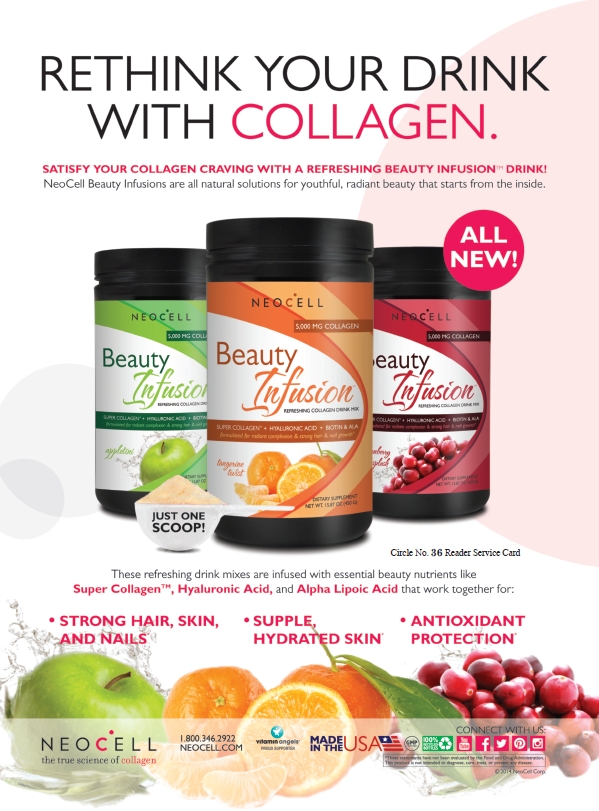 states Sarah Eggenberger, vice president of product development at MyChelle Dermaceuticals, Louisville, CO. When the skin is resurfaced regularly, the body works to fill in new cells in a healthy state of accelerated skin turnover. “We all need to exfoliate to maintain proper skin health, just as we all need to exercise to maintain a healthy body,” Eggenberger adds.
states Sarah Eggenberger, vice president of product development at MyChelle Dermaceuticals, Louisville, CO. When the skin is resurfaced regularly, the body works to fill in new cells in a healthy state of accelerated skin turnover. “We all need to exfoliate to maintain proper skin health, just as we all need to exercise to maintain a healthy body,” Eggenberger adds.
Exfoliating also helps cleanse impurities and remove unwanted environmental stressors. And Kate Tart, corporate trainer at derma e, Simi Valley, CA, and licensed esthetician, adds another interesting benefit: receiving the maximum benefits of the serum, crème or moisturizer you apply afterwards. “With weekly exfoliation, these treatment products will not have to fight through a layer of dead skin cells to be absorbed properly,” she explains.
Question 3: How many dead facial skin cells are shed daily? Tens of thousands, says Tart. That’s seven to eight million facial skin cells annually. “Without proper exfoliation, these dead skin cells start to build up on the surface of our skin, making it appear dull, dry or flaky,” says Tart. “This buildup can also make the skin appear uneven and leave it more prone to clogged pores, blackheads and breakouts.”
In the end, exfoliation “helps the skin look healthier, younger and feel smoother,” Tart believes.
Question 4: How often should one exfoliate? All the experts interviewed for this piece agree that most individuals should exfoliate once a week to get rid of dead skin cells. But, there are some variations here. For instance, men who shave can often get away without exfoliating those areas since the razor takes care of sloughing off the dead cells. And, those with oily skin may be able to add an exfoliation weekly (two to three times per week, depending on the individual), says Eggenberger, to avoid excess dirt, oil and debris building up in the pores.
But again, make sure shoppers are aware that this is a very individualized process. “You don’t want to overdo it and strip the skin of the natural oils it needs,” says Kim Wells, personal care brand manager at NOW Foods, Bloomingdale, IL. “It’s relatively easy to overuse a product and leave the skin feeling dry, so with exfoliation, it’s best to start off once a week. People figure out what is best for their skin pretty quickly.”
Question 5: Which are the best ingredients for exfoliation? “It really depends on the person,” says Schaeffer. “Various ingredients have various levels of exfoliation (e.g., walnut shells are intense whereas jojoba beads are very gentle). The best one is one that suits the customer’s desired ‘grit’ level.”
 The first step when helping shoppers is to see whether they’d like to use a physical exfoliant or a chemical exfoliant. Physical exfoliants, a.k.a. scrubs, use a manual scrubbing agent to remove dead skin cells, according to Tart. “This is the most popular form of exfoliation,” she says. “When choosing a scrub, ensuring that it is gentle is one of the most important factors. You don’t want anything too scratchy because it could lead to inflammation or prolonged redness and irritation.”
The first step when helping shoppers is to see whether they’d like to use a physical exfoliant or a chemical exfoliant. Physical exfoliants, a.k.a. scrubs, use a manual scrubbing agent to remove dead skin cells, according to Tart. “This is the most popular form of exfoliation,” she says. “When choosing a scrub, ensuring that it is gentle is one of the most important factors. You don’t want anything too scratchy because it could lead to inflammation or prolonged redness and irritation.”
Like Schaeffer, Wells points out that jojoba beads are good exfoliators for sensitive skin, as are rice bran beads. For normal to oily skin, she believes “you can use the same types of products or something more aggressive if you are trying to reduce the appearance of damage or scarring.” Such microdermabrasion products may contain volcanic sand or other natural crystal blends. Her company makes a Microdermabrasion Scrub with Dead Sea Salt and Volcanic Sand, a very finely milled physical scrub for all skin types.
Some other common ways to make “grit” are with apricot seed powder or corn meal, says Tart.
Those with sensitive skin and broken capillaries may find manual exfoliators too irritating. Peels may be an option. Tart explains that chemical exfoliators (or peels) use “fruit enzymes or acids to dissolve the bonds that hold cells together, enabling them to be shed easier.”
Again, finding a gentle product that works for the individual shopper is key. “Peels come in varying strengths, so be sure to conduct a patch test to see if a particular peel is right for your level of skin sensitivity,” Tart advises.
As for ingredients, Cottell favors alpha hydroxy acids (AHAs), which she believes “are the best exfoliators, for sure!” Shoppers may know of them as malic, glycolic or lactic acid.
Cottell suggests AHA sourced from sugarcane or bilberry fruit, because it doesn’t inflame or damage the skin, but will “penetrate past the first layer of skin to remove dead skin cells and aid in firming and tightening the skin.” Her company makes an Age-Defying Mask and Age-Defying Toner with fruit-derived AHA.
Some peels can even be used overnight. For instance, derma e makes an Overnight Peel with Glycolic, Lactic and Malic Acids for daily exfoliation.
Meanwhile, Eggenberger likes the benefits of both chemical and physical exfoliators.
One combination product noted by Tart is her company’s Exfoliating Scrub with Papaya Fruit Enzymes, Corn Meal and Apricot Seed Powder.
Step-by-Step Tips
Question 6: What is the best order in which to use skincare products? “Most people probably don’t give much thought regarding the order in which they apply their skincare products; however, it can make a big difference in how effectively these formulas will perform,” Tart believes.
“You always want to cleanse and tone first,” says 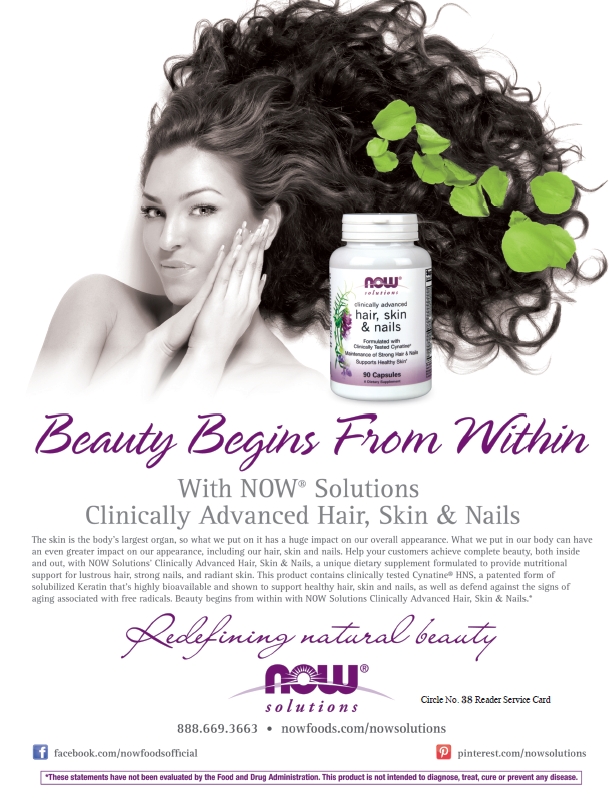 Eggenberger. “From this point, you can apply a general rule of thumb, which is to layer products from lightest to heaviest on the skin.”
Eggenberger. “From this point, you can apply a general rule of thumb, which is to layer products from lightest to heaviest on the skin.”
So, the next step, according to Cottell, is to use a mask to exfoliate dead skin cells.
After that, “the main variable is when to treat,” such as with a spot treatment or serum, says Schaeffer.
Tart believes if you apply a moisturizer before a serum, “the moisturizer’s occlusive nature could prevent the serum from penetrating deeply to important layers of the skin, inhibiting its maximum potential.” Serums are lightweight, potent treatments, she says, noting they transport small molecular-weight ingredients deep within the skin.
Therefore, try serums next, which some like Cottell suggest for nighttime use. “They’re more concentrated and will have time to absorb in properly and repair during sleep,” she states. “You could use them in the morning for very dry skin types.”
Then, eye creams and facial moisturizers, in that order, says Tart.
For those with dry skin, a skin oil would go next as a skin finisher. “Facial oils are high in vitamin E and fatty acids that help lock in moisture, aid in repairing damaged skin, provide a protective layer against extreme weather and improve skin’s texture and softness,” Tart believes.
Last, use sunscreen before applying makeup, if the moisturizer doesn’t offer sun protection.
A Sensitive Subject
Question 7: What are the signs of sensitive skin? According to Dorie Greenblatt, director of sales/marketing at Home Health, Ronkonkoma, NY, “If skin is blotchy, red or stressed, feels dry or tight, itches or stings, or experiences irritation or inflammation, it is most likely to have come in contact with an allergen or known irritant.” Such irritants include aggressive detergents, petroleum, color, fragrance or dyes.
Tart gives retailers this cheat-sheet of questions to ask shoppers concerned about sensitive skin.
“If shoppers answer ‘yes’ to at least two of these questions, it’s possible that they have sensitive skin, and choosing products formulated for sensitive skin might just be the solution their skin has been looking for,” she believes.
• Does your skin feel dry, tight or irritated right after cleansing?
• Is your skin often red, itchy or irritated?
• Do you experience blotchiness or flare-ups often?
• Do you have sensitivities to fragrances?
Sensitive skin is also a category that changes depending on weather, climate, travel, stress, one’s health and other factors. So, shoppers may need to re-evaluate regularly.
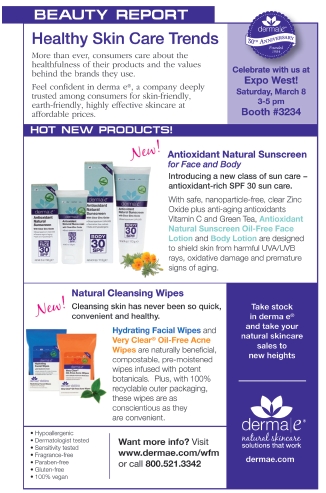 What makes a product suitable for sensitive skin may not be 100% clear to shoppers. “The majority of products for sensitive skin are pared-down simplified formulas,” states Eggenberger. “So, you want to find balance in using products that will not irritate your skin, but you still want to incorporate ingredients that will actually help your condition and pull you out of having sensitive skin.”
What makes a product suitable for sensitive skin may not be 100% clear to shoppers. “The majority of products for sensitive skin are pared-down simplified formulas,” states Eggenberger. “So, you want to find balance in using products that will not irritate your skin, but you still want to incorporate ingredients that will actually help your condition and pull you out of having sensitive skin.”
Many products include verbiage that they are suitable for sensitive skin, but it’s nearly impossible for the shopper to know for sure because there are so many possible irritants. “Consequently, unless clinical skin testing is done on the exact formulation (versus specific ingredients) that a consumer buys off the shelf, there is no way of knowing whether that product will be safe for a sensitive individual,” Greenblatt believes.
Her company recently launched a new line (evercle–n, from Home Health) that has undergone clinical testing to prove safety for sensitive skin. “Clinically proven is not something every skincare line can say. evercle–n can because it was clinically and dermatologically tested and evaluated by panels of women with sensitive skin,” says Greenblatt. “Every formula was tested for dermal irritation and sensitization, and is proven to be non-irritating, hypoallergenic and non-comedogenic (won’t clog pores).”
Wells agrees that it’s difficult to know from a label whether a product is suitable for sensitive skin. And, shoppers are often looking for help. “This is where employee training and education becomes crucial,” she states. “It’s important for HABA section staff to be well acquainted with the products they are selling.” Scour manufacturers’ literature and Web sites for information, and ask for samples for your staff to try so they get a feel for what they are selling.
Schaeffer reminds us to recommend patch testing from testers. “Wait a day, see what happens and then make the purchase, or not,” he states.
Question 8: Which ingredients work for sensitive skin? Nothing synthetic, experts say. Greenblatt recommends products with “‘clean’ plant-based nutrients and cleansers along with calming botanicals, conditioning oils, soothing moisturizers and skin-loving vitamins.”
Natural is better for several reasons. “Sensitive skin is an  open passageway due to a faulty barrier. It allows everything in and releases everything out,” says Eggenberger. Thus, one wouldn’t want chemicals to seep into the body through the skin.
open passageway due to a faulty barrier. It allows everything in and releases everything out,” says Eggenberger. Thus, one wouldn’t want chemicals to seep into the body through the skin.
Natural ingredients also tend to be more soothing and beneficial to sensitive skin. “In general, sensitive skin is more accepting of ingredients, allowing actives to work more efficiently and effectively,” says Eggenberger. Those with sensitive skin may be able to use less product or fewer daily applications.
Broadly, Jentri Jollimore, product expert and educator at Badger, Gilsum, NH, recommends products that:
• Fully disclose ingredients, and don’t hide behind the mask of “proprietary information.” She states, “When shopping for sensitive skin, it is important to know every ingredient contained within the product.”
• Third-party certified ingredients from groups like the U.S. Department of Agriculture, Natural Products Association or NSF. Without that, “there’s no way to tell if it is truly natural,” says Jollimore.
• Use minimally processed or raw ingredients. States Jollimore, “Chemical refining, bleaching and deodorizing may leave residues behind. Oftentimes, this is used to mask poor quality of original ingredients.”
Experts also weigh in on some specific favorites for sensitive skin.
Schaeffer says licorice root extract is a “very soothing, anti-inflammatory, redness-reducing natural ingredient,” while Wells pinpoints skin soothers aloe vera, oatmeal, chamomile, calendula, green tea and cucumber extract. Greenblatt explains that aloe is “a natural moisturizer with the power to calm, soothe and hydrate” and green tea extract “provides natural antioxidant benefits to soothe skin and protect it from free radicals.” She adds that lavender flower extract “helps to balance the complexion with its soothing properties.”
|
The Case for Collagen
Shoppers of late have gotten the message that optimal skincare isn’t about covering up with quick fixes; it’s about supporting the skin’s internal structure. The dermis, specifically, is the layer of the skin where your efforts can make a big difference. This layer contains blood vessels, nerves and sensory receptors, and is where the structural foundation of your skin resides in collagen, elastin and other molecules. “Collagen is the most abundant protein in the body, giving tensile strength to the connective tissue such as the skin dermis,” states Joosang Park, vice president of scientific affairs, BioCell Technology, Newport Beach, CA. With age, collagen is lost along with hyaluronic acid (HA), he explains, “leading to appearance of visible aging signs,” states Park. “After age 25, the collagen in your body begins to deplete at a rate of 1.5% per year, which is the cause of the signs of aging. Therefore, supplementing with a collagen product is crucial to supporting hair, skin and nail health,” adds Al Quadri, president of Neocell, Irvine, CA. Quadri explains the benefits of collagen, when taken orally: “Collagen produces peptides that stimulate fibroblast cells that produce new collagen that supports the strength of connective tissues.” For this reason, Park believes replenishing collagen and HA is key to maintaining a youthful appearance. He says his company’s proprietary collagen ingredient has research backing for this purpose: “BioCell Collagen, a patented, naturally occurring matrix of hydrolyzed collagen type II and glycosaminoglycans such as HA in a bioavailable form, is an ingredient that was tested in human subjects displaying its healthy aging effect through supporting both collagen and HA.” Adding some additional details, Quadri says his company’s bio-active collagen products “help the skin by helping rebuild and reorganize the skin matrix so skin stays firm and full.” Shoppers may wonder whether topical collagen can achieve these results. Quadri believes oral supplements are a safer bet. “Topical collagen can help to moisturize, but collagen is too large a molecule to penetrate the skin,” he explains. “This means that topical collagen won’t be able to stimulate collagen production on a cellular level the way collagen supplementation will.” Creams don’t “turn on the collagen light switch,” Quadri believes, like internal supplements do. “Special rare amino acids, the building blocks of collagen proteins, signal the body to increase collagen production when taken orally,” he states. How quickly can all this take place? “A person taking 100% hydrolyzed NeoCell Collagen can expect to see results within four to six weeks and the results can be seen without adding in any other supporting nutrients. The results that NeoCell collagen will show in the skin are wrinkle reduction and increased elasticity,” says Quadri. And, Park states that “in the case of BioCell Collagen, a published human skin study by BioCell Technology showed that its daily ingestion (1 g per day) for 12 weeks led to a significant reduction of skin dryness and an increase in collagen content, resulting in decreases in wrinkles and fine lines.” |
|
Jolie Root, nutritionist and educator for Carlson Laboratories, Arlington Heights, IL, speaks of the benefits of vitamin E-based products, which she says “are a great choice for sensitive skin, because vitamin E protects the skin by nourishing it.” This potent antioxidant also helps neutralize free radicals, which damage collagen, dry out skin and create wrinkles. She adds, “Sensitive skin sometimes exhibits signs of inflammation including redness. Vitamin E helps to counter that,” such as by reducing redness from the sun.
For hydration, Greenblatt says allantoin moisturizes and protects the skin, candeia-derived bisabolol has skin-calming properties and shea butter is an ultra-rich natural moisturizer that “absorbs easily into the skin, helping it feel soft and smooth.” And, conditioning oils like grapeseed, jojoba seed and safflower seed are “perfect lightweight moisturizers that help hydrate skin,” Greenblatt states.
Cottell says her company has sea aster in its Calming Skin Therapy line because it “reduces redness and inflammation in the skin. These soothing properties are effective for even the most sensitive of skin.”
Tart points out that anti-inflammatory ingredients (like chamomile, Canadian Willowherb and arnica) can be great for reducing the redness of sensitive skin. She says that Pycnogenol French maritime tree bark extract has the added benefit of “helping to strengthen the walls of fragile blood vessels and capillaries, making them less prone to breaking and bursting,” Tart believes.
Meanwhile, for cleansing, Greenblatt suggests plant-based products with ingredients, like some derived from coconut, that “gently eliminate dirt and oil without clogging pores, stripping skin of its natural oils or causing irritation.” For instance, cocomidopropyl betain gently foams and decyl glucoside is a mild surfactant.
In addition, Jollimore says waterless products, like balms and oils, work well for moisturizing sensitive skin. “This is because if a product has no water in it, there is no need for harsh preservatives and/or emulsifiers,” she believes.
Hold it Right There!
Question 9: Which hair styling product was created with inspiration from military-grade bug repellent? Hair spray! During World War II, the U.S. government developed aerosol cans to distribute bug spray and soon, companies were using the cans to distribute a sticky, stiff, resin-based hairspray—along with harmful chlorofluorocarbons (2). While this and some other toxic ingredients have since been taken out of hairspray, there are still plenty of reasons to avoid mainstream hairspray and other styling products.
For instance, Cottell tells us that polyvinyl chloride (PVCs) in conventional styling products are essentially plastic. “They put a coating on the hair, and won’t let other ingredients penetrate. There is no added value to using them, and they are bad for the environment as well,” she believes.
Plus, they often contain artificial dyes and alcohol, and are not pH balanced, according to Devon B. Katzev, president of Straight Arrow Products, Inc., makers of Conceived by Nature, Bethlehem, PA.
And don’t forget the sulfates, which Jollimore says “strip the natural oils from the hair, causing the cuticle (the outermost layer) to become damaged. This leads to breakage, split ends and flyaways, and makes hair look dull and lifeless.”
Meanwhile, natural styling aids are making a positive mark on hair care. “Natural hair styling ingredients can perform as well as mainstream ones, and provide a bigger health benefit to your hair,” states Cottell.
In lieu of conventional products’ petrochemical ingredients, natural companies can help shoppers achieve great hold and style with ingredients like quinoa protein, guar gum, rosehip seed oil and B-vitamins. “These are some of the natural styling ingredients to look for in helping with hold, smoothing out the hair follicle and giving an overall shine,” Cottell feels.
There’s great variety, too, in natural hair styling aids. Katzev says that his company has six styling items, three of which are designed for all-day styling hold. “So, for consumers who are looking for a good all-day styling hold without excessive weighing down, stickiness and drying, we have that solution,” he states.
Natural products also leave behind benefits, as opposed to residue. Katzev speaks of his firm’s strengthening, detangling and shine/anti-frizz formulas. “These styling products combine proprietary herbal blends and proteins to help strengthen and repair and that is the reason we have seen better performance than mainstream products,” he states, adding, “Further benefit is nourishment for the scalp, extra-moisturizing for the hair shaft and a light-weight feel.” He believes this leads to fuller, thicker, healthier hair with body and shine.
Jollimore adds that leave-in conditioners, shine enhancers, pomades and smoothing serums are other places where natural ingredients shine because they work with the hair’s ecosystem.
“These products are generally oils and waxes, and in the case of mainstream styling aids, they likely contain silicone, which can deplete hair over time,” she explains.
The natural variety is often made with natural oils (like argan and jojoba) and botanical extracts like seabuckthorn to “provide shiny, smooth hair and benefit the hair over time by providing fortification, nourishment and pliability,” Jollimore states.
She explains that this is the key to avoiding frizz. “Remember that frizz is mostly caused by breakage and damage to the cuticle,” Jollimore points out. “So if you treat your hair kindly, your daily frizz maintenance should diminish.”
Lip Service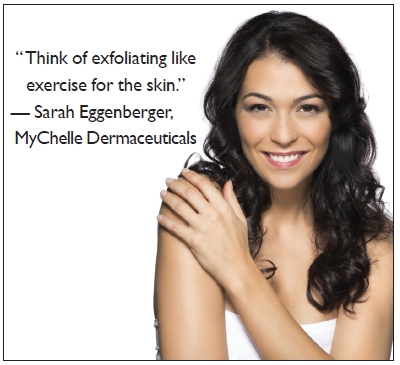
Question 10: Is lip balm addictive? It can happen. As explained in a 2011 segment on The Dr. Oz Show (3), some ingredients in lip balms don’t moisturize the lips. They just add a heavy film to the skin’s outer layer, which blocks new cells from coming to the surface. The end result is dry, flaky lips, and petroleum is a major offender. Users reapply and reapply, and the dryness never goes away.
“Petrolatum, made from petroleum, is an ingredient that is just not necessary in lip balm,” Steve Shriver, CEO of Eco Lips, Cedar Rapids, IA, believes. “Unlike plant oils that are renewable, petroleum is a finite resource. Functionally, it creates a barrier on the lips: not letting moisture in or out.”
Also problematic are sweeteners added to some conventional lip care products. “They cause you to lick your lips, and reapply more lip balm,” says Jollimore.
In addition, Shriver says conventional lip balm makers often incorporate parabens and synthetic fragrance, which are potentially harmful chemicals.
Natural lip care products work differently. Rather than covering up the skin on your lips, they nourish the skin. “If it is formulated correctly, natural lip care can easily out-perform mainstream chemical based products,” says Shriver. “The trick, much like with food, is using relatively fresh ingredients and using the right ratios of those ingredients. There should no longer be a compromise with natural products.”
Jollimore makes the point that natural lip balms often work better than their mainstream counterparts because they contain nourishing oils, waxes and butters that are naturally compatible with the body. “They protect lips when they are chapped, and help them to heal better,” she says, listing her favorite lip care ingredients: extra-virgin olive oil, aloe vera for soothing, cocoa butter for intensive moisturizing and antioxidants like rosehip, calendula and rosemary. “If the lip balm is scented in any way, shoppers should look for steam-distilled essential oils instead of artificial ‘fragrance’ and flavorings,” she states.
Meanwhile, Cottell suggests lip products containing jojoba oil, beeswax, castor oil, carnauba wax and natural glycerin. “All these ingredients are extremely moisturizing, easily absorbed, and add shine,” she states.
Shriver likes mongongo oil and Brazil nut oil, which he says have “superior moisturizing properties and feel luscious on the lips.”
Last, Root believes vitamin E is a great option for chapped lips because it smoothes the skin and provides sun protection. WF
|
Time-Saving Beauty Advice When the morning routine involves showering, dressing, walking the dog, prepping lunches for the kids, swallowing a quick breakfast and racing to work, time-savers are essential! Here are some time-saving tips for busy mornings. • Tim Schaeffer, senior vice president of marketing at Mineral Fusion, says you can blend your treatment product and facial moisturizer together in the palm of your hand and apply, “assuming the user doesn’t mind applying treatment to their entire face.” |
References
1. “Facial Cleansing Essentials, Part 3: Resurfacing Transformation,” http://blog.skinauthority.com/facial-cleansing-essentials-part-3-resurfacing-transformation, accessed Jan. 28, 2014.
2. “The Story Behind Hairspray,” www.stylelist.com/view/the-story-behind-hairspray, accessed Jan. 28, 2014.
3. The Dr. Oz Show, www.doctoroz.com/videos/are-you-addicted-lip-balm, posted Sept. 22, 2011, accessed Jan. 29, 2014.
Published in WholeFoods Magazine, March 2014

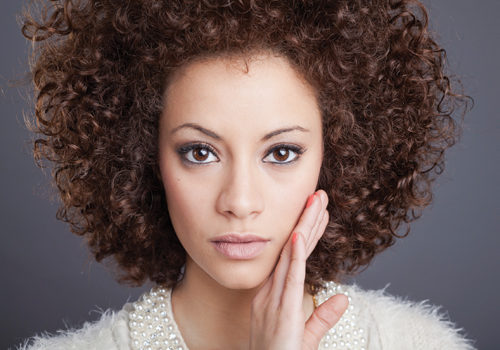

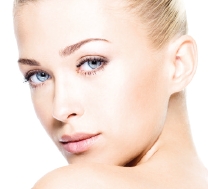 NOW Personal Care brand manager. To avoid the wait it takes for skin products to dry, “apply the layers in between getting ready to help speed up the process and allow products to absorb, while making sure not to skip a step,” she suggests.
NOW Personal Care brand manager. To avoid the wait it takes for skin products to dry, “apply the layers in between getting ready to help speed up the process and allow products to absorb, while making sure not to skip a step,” she suggests.







